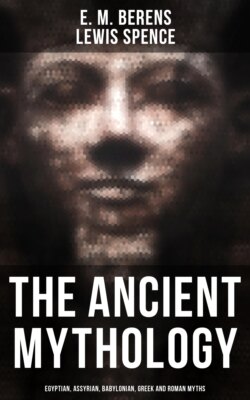Читать книгу The Ancient Mythology: Egyptian, Assyrian, Babylonian, Greek and Roman Myths - Lewis Spence - Страница 110
На сайте Литреса книга снята с продажи.
Ishtar in Assyria
ОглавлениеNext to Asshur in the affections of the Assyrian people stood Ishtar. As a goddess in Assyria she was absolutely identical with the Babylonian Ishtar, her favourite shrines in the northern kingdom being Nineveh, Arbela, and the temple of Kidmuru, also in Nineveh. The Assyrians appear to have admitted her Babylonian origin, or at least to have confessed that theirs was originally a Babylonian Ishtar, for Tiglath-pileser I lays emphasis upon the circumstance that a shrine he raised to Ishtar in his capital is dedicated to 'the Assyrian Ishtar.' The date of this monarch is 1010 B.C., or near it, so that the above is a comparatively early allusion to Ishtar in Assyrian history. The Ishtars of Arbela and Kidmuru do not appear in Assyrian texts until the time of Esar-haddon (681 B.C.), thus the Ishtar of Nineveh was much the most venerable of the three. Arbela was evidently a religious centre of importance, and the theory has been advanced that it became the seat of a school of prophets connected with the worship of Ishtar. Jastrow in his Religion of Babylonia and Assyria (1898, p. 203), writing on this point, says, "It is quite possible, if not probable, that the three Ishtars are each of independent origin. The 'queen of Kidmuru,' indeed, I venture to think, is the indigenous Ishtar of Nineveh, who is obliged to yield her place to the so-called 'Assyrian Ishtar,' upon the transfer of the capital of Assyria to Nineveh, and henceforth is known by one of her epithets to distinguish her from her more formidable rival. The cult of Ishtar at Arbela is probably, too, of ancient date; but special circumstances that escape us appear to have led to a revival of interest in their cults during the period when Assyria reached the zenith of her power. The important point for us to bear in mind is that no essential distinctions between these three Ishtars were made by the Assyrians. Their traits and epithets are similar, and for all practical purposes we have only one Ishtar in the northern empire."
